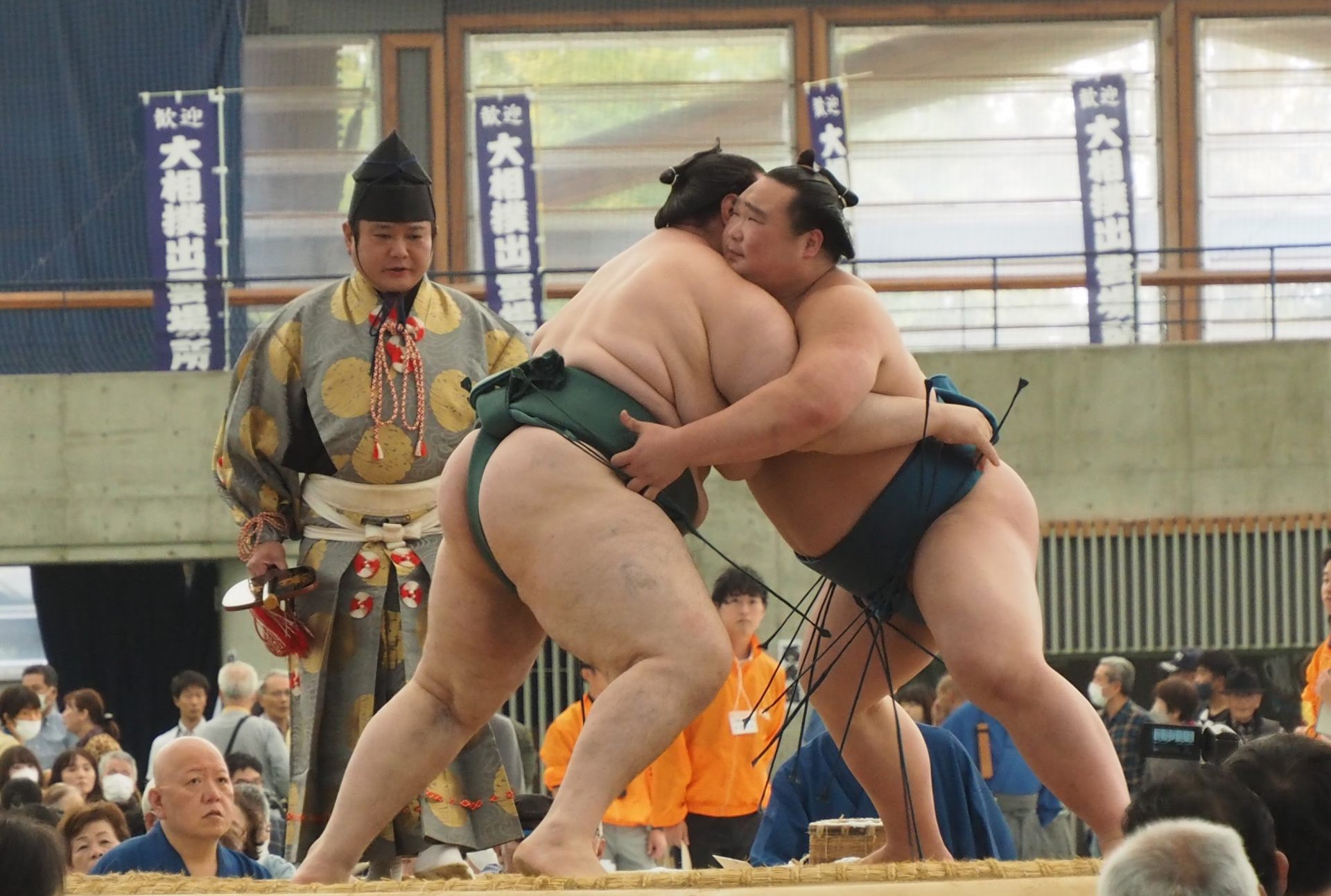
Venture to Izumo, the Birthplace of Sumo, and See a Grand Sumo Tournament!
A journey into the origins of sumo, Japan’s national sport, awaits in Izumo Shimane Prefecture, the birthplace of sumo. Embark on this deep dive expedition into the heart of sumo culture, complete with all the thrills of viewing a real, Grand Sumo tournament.
※Listed prices/timings refer to general visits and viewing.
Table of Contents
- Discover the Roots of Sumo in Izumo and Attend a Grand Sumo Match
- The Mythical Origins of Sumo at your Fingertips
- A deep dive into the Matsue Domain, known for its numerous prominent sumo wrestlers.
- Finally, the much-anticipated sumo wrestling match is here!
- Visiting "Sugaya Tatara Yamauchi," a historical site known for sword-makng that’s deeply connected with the world of sumo.
- Must-See Spots in the Izumo Area
- Wrap-Up
Discover the Roots of Sumo in Izumo and Attend a Grand Sumo Match
With your eyes set on watching a real Grand Sumo tournament, this journey kicks off with a stroll through the Izumo area in Shimane Prefecture, the proverbial cradle of sumo wrestling. Here you’ll get a little crash-course of knowledge under your belt before heading over to all the thrills that await at the match. As a bonus, you’ll even get to see "tataraba”, historically linked to both sumo and the production of Jwapanese swords.
Please watch the video!
The Mythical Origins of Sumo at your Fingertips

A must-visit in Shimane is the Izumo Taisha Shrine. Documented in Japan's oldest history book, the "Kojiki" (712 AD), it ranks alongside Ise Shrine as one of Japan's most significant ancient shrines. The shrine venerates Okuninushi-no-Okami, well-known as the deity of matchmaking.

The Kagura Hall's enormous shimenawa rope is famous for being the largest in Japan, measuring in at a whopping 13 meters long and 5.2 tons. The shrine's main hall, rebuilt in 1744, is built in Japan's oldest shrine architectural style and is designated as a national treasure.

The tenth month of the old lunar calendar, known as "Kannazuki" (Month without Gods) across Japan is called "Kamiarizuki" (Month with Gods) here in Izumo as the many gods from far and wide are said to gather here. This time of year attracts a particularly high number of travelers as it’s a rare chance to pray to for the luck of many gods all at once, all in one place.

Located about 1 km west of Izumo Taisha, along the coastline, lies Inasa no Hama, a place known for welcoming deities during the Kamiarizuki (Month of the Gods). According to Japanese mythology, it's at this beach where a legendary power contest took place between two gods, "Takeminakata" and "Takemikazuchi." They vied for the control of the land built by the deity Okuninushi no Kami. This mythological tale remains a part of the rich tapestry of stories associated with Inasa no Hama.

In the era of Emperor Suinin (estimated to be around the late 3rd to early 4th century, although not definitively confirmed), a legendary sumo match is said to have taken place in Izumo between "Nomi no Sukune" from Izumo and the famed strongman "Taima no Kehaya". These ancient tales are often considered the origins of sumo wrestling, leading to the perception of the Izumo region as the birthplace of sumo.
A deep dive into the Matsue Domain, known for its numerous prominent sumo wrestlers.
While the ancient legends remain a little grey, its undisputed that the Edo period (1603–1868) set the stage for Izumo as an indispensable part of the history of sumo wrestling.
With the end of the Warring States period and the onset of peace, town culture flourished with a flair for sumo and kabuki as popular forms of entertainment. Feudal domains in turn (comparable to modern-day prefectures) began to competitively recruit strong sumo wrestlers as a way to demonstrate their power. During the Edo period, these wrestlers were supported by their respective domains and carried the prestige of their lords into the ring.

A notable example of this practice was the Matsue Domain in the Izumo region. It supported many legendary wrestlers, including the famous Raiden Tameemon. In 1801, an impressive number of six wrestlers from Matsue Domain occupied top ranks in the sumo rankings (banzuke), a testament to their significant presence even in Edo (modern-day Tokyo).

For generations, the Matsue Domain fostered numerous prominent sumo wrestlers. The heart of this domain was Matsue Castle.

Constructed about 400 years ago by Yoshiharu Horio, the governor of Izumo and Oki, Matsue Castle was under the domain of the Matsudaira clan from 1638 to 1871, who governed the region during that period.

The castle's main tower, comprising four levels, five stories and a basement, features the top-floor observation deck "Tengu no Ma." This unique spot was designed as a lookout and command post with no walls, just railings. This allows for a breathtaking 360-degree panorama of Matsue city and Lake Shinji.

Step inside the castle to find displays detailing part of Matsue's history and documents related to Matsue Castle. The lightweight paulownia wood stairs, designed for quick movement in times of emergency, are a unique feature found only in this castle.
Finally, the much-anticipated sumo wrestling match is here!

After exploring the deep connection between Izumo and sumo, it's time to actually witness a grand sumo tournament. Today, a "jungyo" or regional tour event opens at the Izumo Dome in Izumo City, offering a rare opportunity to watch grand sumo in the sport's birthplace.
A "jungyo" is a sumo exhibition tour conducted mainly in the months when there are no official grand sumo tournaments, which are held in January, March, May, July, September, and November. These one-day events take place in over 50 cities throughout the year.
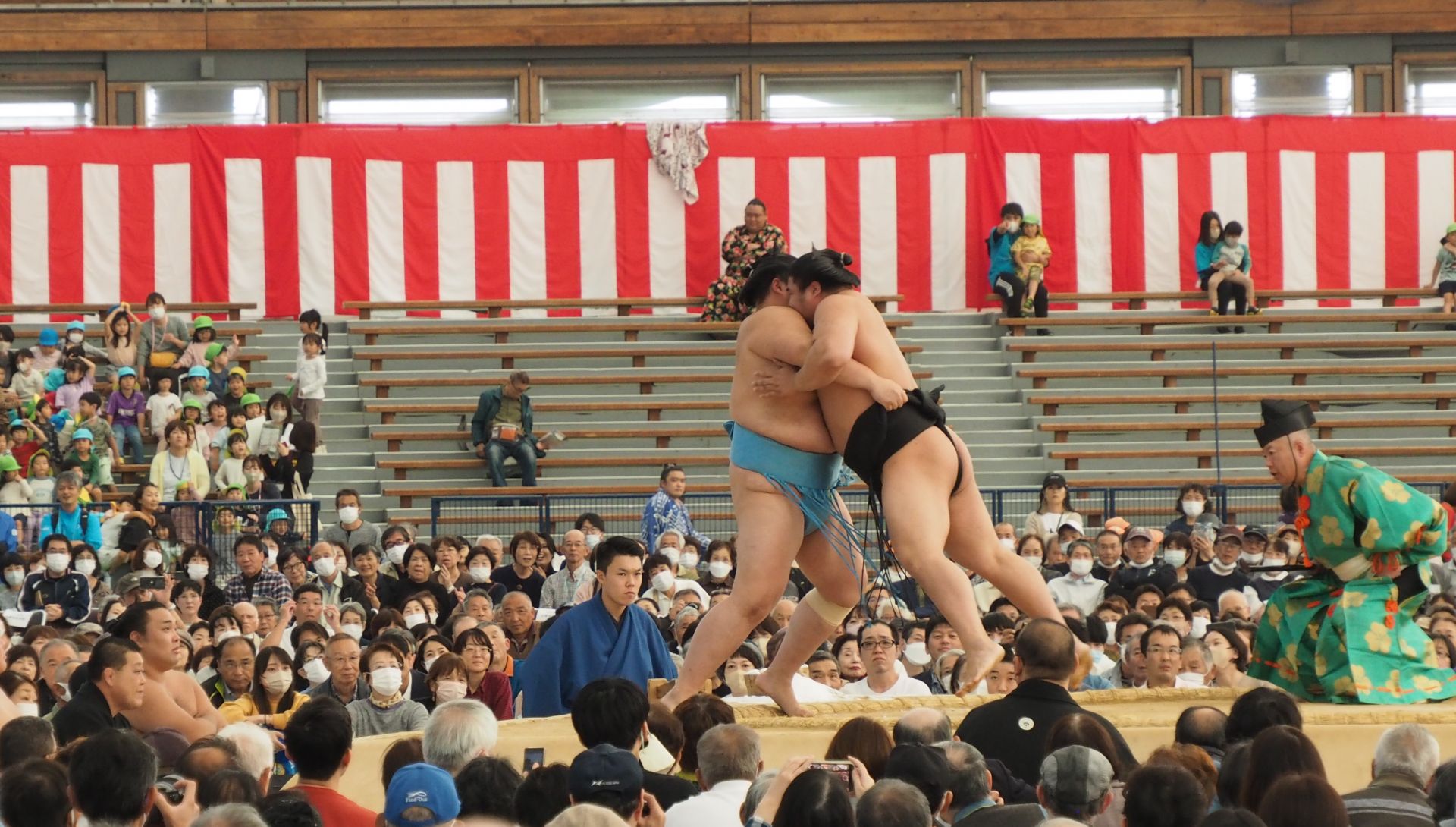

See sumo matches with your own eyes over at the jungyo, all with the same intensity as an official tournament. Overall, the general vibe is more relaxed than standard grand tournaments, meaning there’s a chance to bump elbows with the sumo wrestlers and maybe even snap a photo with your favorite wrestler.

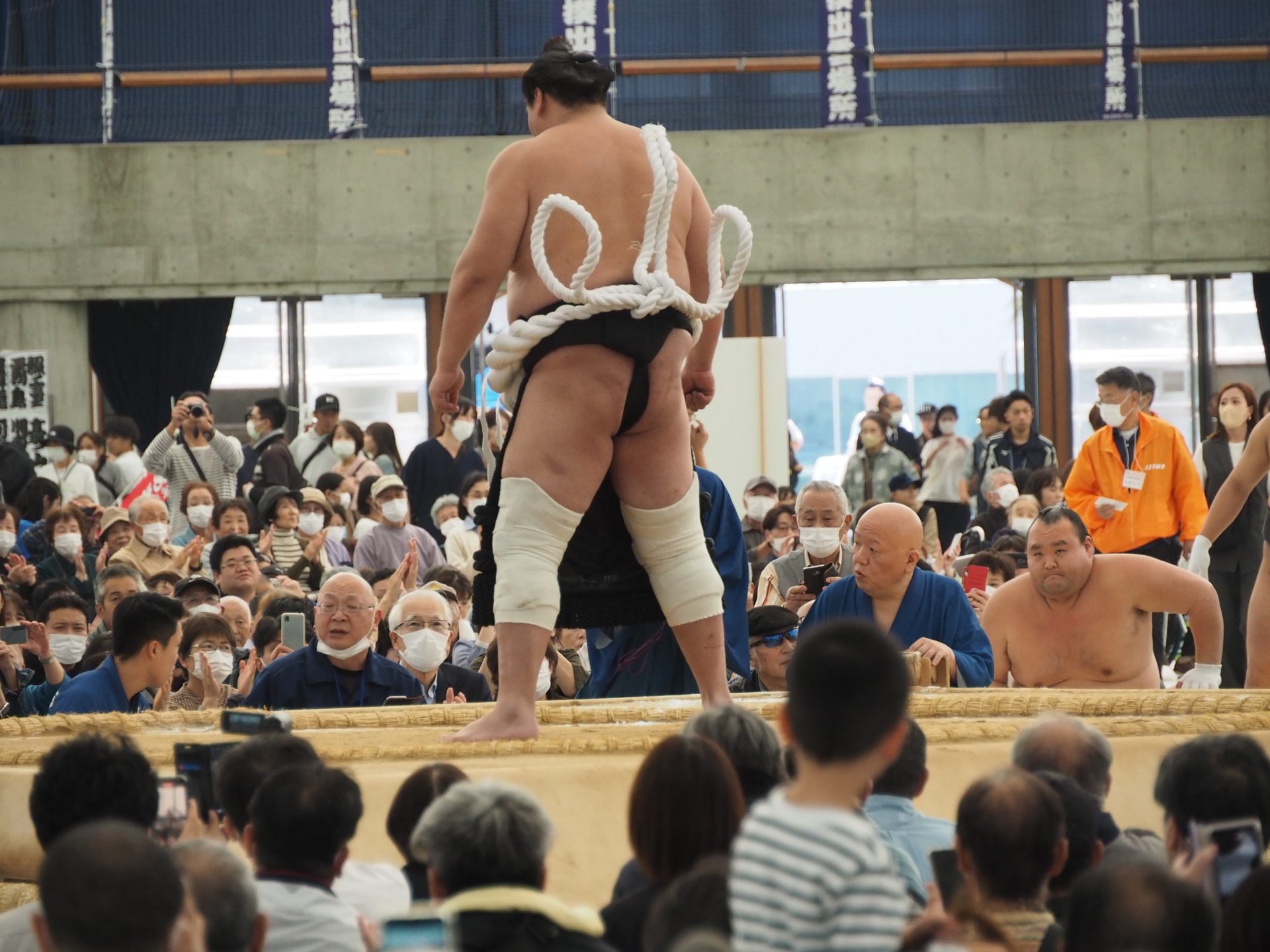
“Shokkiri”, a unique performance during bouts where two sumo wrestlers comically demonstrate forbidden moves and rare techniques, offering a spectacle not seen in the official tournaments.
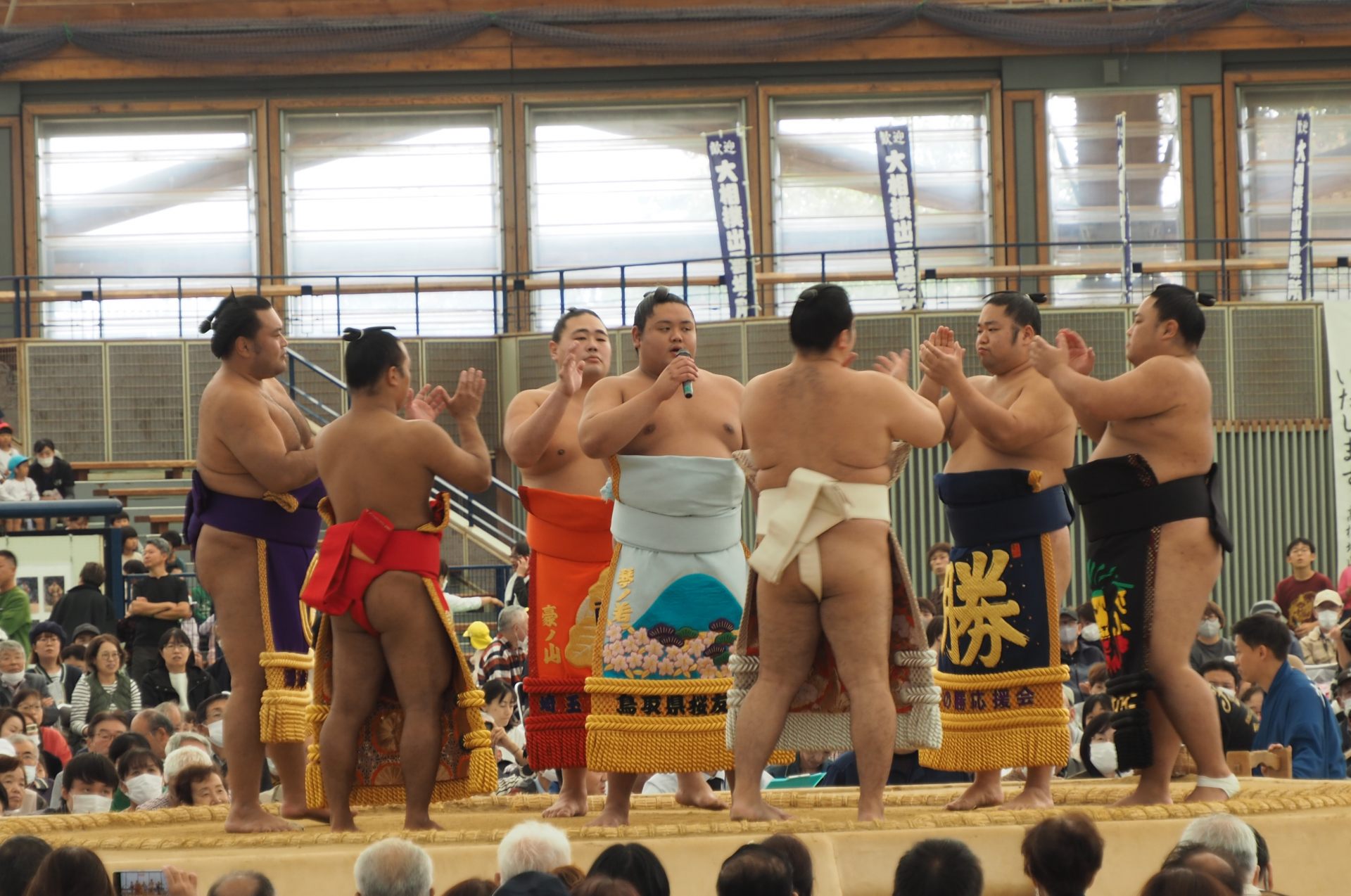
Among the events, the "Sumo Jinku" (Sumo folk song) performance by the wrestlers on the ring is one not soon forgotten. The wrestlers are first adorned in beautifully decorated ceremonial aprons called "Kesho-mawashi," before singing the rhythmic seven-and-five syllable chants in full, boisterous accompaniment of hand claps and foot stomping. Their melodic voices echo throughout the dome, resonating deeply with the fans in attendance.


As the top-ranked wrestlers, known as Makuuchi (those above the rank of Maegashira), make their ring entrance, the venue is all a-buzz with energy.
The entrance of the Yokozuna, the highest-ranking sumo wrestler, is one of the highlights. The Yokozuna, adorned with a pure white rope, makes a grand entrance flanked by the "Tsuyuharai" (the wrestler who leads the Yokozuna) and the "Tachimochi" (the wrestler who follows the Yokozuna, carrying a sword).

In the center of the ring, every time the Yokozuna performs the Shiko (a basic Sumo move where a wrestler lifts one leg high and stomps it down forcefully), the audience shouts "Yoisho!" in encouragement. The Shiko is not only a physical display but also holds a religious significance, symbolizing the act of stamping down evil spirits beneath the earth. This solemn yet dynamic ritual on the dohyo is something to behold and remember.

The final matches bring the crowd toa crescendo as matches between famed wrestlers continue back-to-back. This tour is held in areas outside of Tokyo, Osaka, Nagoya, and Fukuoka, where the main tournaments are held, meaning it's a rare opportunity for sumo fans in regional areas to witness all the action live. Join up with the locals as they cheer on the wrestlers in a day to remember.
*Listed schedule and events may vary depending on the location of the tour.
Visiting "Sugaya Tatara Yamauchi," a historical site known for sword-makng that’s deeply connected with the world of sumo.
The link between sumo and sword runs so deep it’s even evident when the Yokozuna (highest rank in sumo) wrestlers enter the ring with a Tachimochi (a wrestler holding a sword) at their side. The sword is also a symbol of the Yokozuna's dignity.
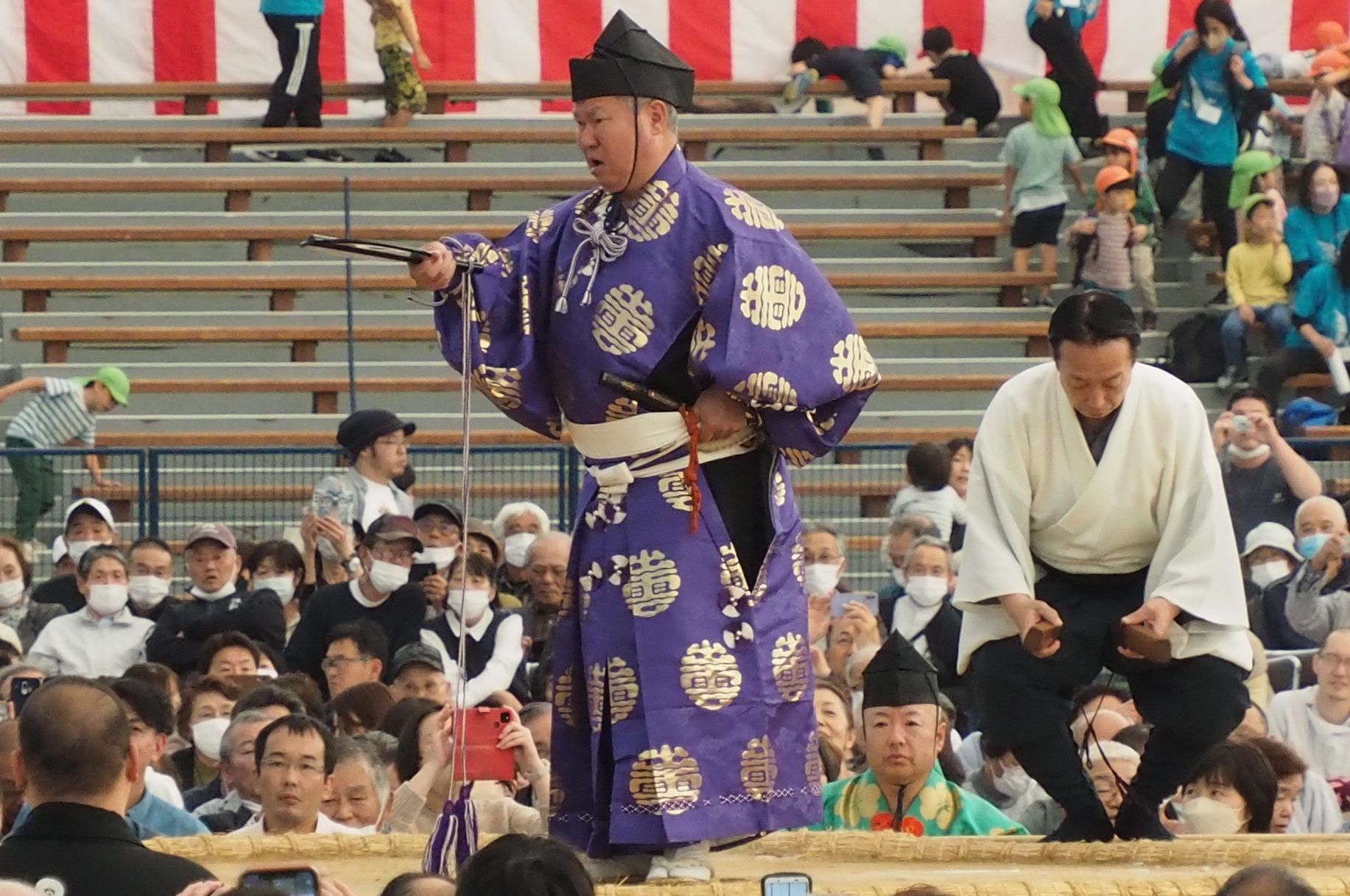
The highest-ranking sumo referee, known as "Tate Gyoji," wears a short sword in his belt. This symbolizes the determination to commit seppuku (ritual suicide) in case of a wrong judgment call during a sumo match. While it's unlikely that this would actually happen, it represents a serious commitment to accurate decision-making.
Yunan is a city that lies to the south of Izumo, standing wrought in the traditions of sword-making. It’s also known as "Sugaya Tatara Yamauchi” in Japanese, pointing to its history of old, thriving as a village known for iron craft.


The most symbolic building in the village is the "Takadono" (High Hall). It refers to the building housing the iron-making furnace, and it's a perfect square, measuring about 18 meters on each side.
At its center sits the iron-making furnace, surrounded by areas for storing sand and iron sand, and a resting place for the "Murage" (chief technician). This Takadono is the only one of its kind still existing in its original form, making it incredibly valuable.

Director Hayao Miyazaki's movie "Princess Mononoke" features a tatara iron-making site, said to be modeled after this Sugaya Tatara Yamauchi. Also, the popular anime "Demon Slayer: Kimetsu no Yaiba" includes characters who are deeply involved in tatara iron-making and swordsmithing. A journey to Yamauchi is a chance to step into the world of these works in the flesh.
Details
- Name in Japanese
- 菅谷たたら山内
- Postal Code
- 690-2801
- Address
- 4210-2 Yoshidachoyoshida, Unnan City, Shimane
- Telephone
- 0854-74-0311 (The Iron History Village Regional Promotion Foundation)
- Closed
- Mondays(If it is a national holiday, the next day is closed)
- Business Hours
- 9:00am - 5:00pm(Admission allowed until 4:30pm)
- Admission
-
General Admission: 310 yen
Elementary and Middle School Students: 210 yen - Access
- The location can be reached by car in about 10 minutes from the Yoshida-Kakeya Interchange on the Chugoku Expressway.
- Credit Cards
- Not accepted
- Official Website
- Official Website (Japanese)

Located about 10 minutes by car from "Sugatani Tatara Yamauchi," the "Tatara Blacksmith Workshop" offers the opportunity to create a paper knife using the esteemed, traditional forging methods, shaping the blade by hammering it with a mallet.

After shaping the blade with a hammer to the desired form, it's refined with a grinder for the finishing touches. Here you’ll enjoy the chance to shadow an artisan who remains on hand to keep the entire crafting process especially smooth. Total crafting time is about 30 minutes for a single piece, making it a quick and convenient workshop to join.

Details
- Name in Japanese
- たたら鍛冶工房
- Postal Code
- 690-2801
- Address
- 4081-1 Yoshidachoyoshida, Unnan City, Shimane
- Telephone
- 0854-74-0311 (The Iron History Village Regional Promotion Foundation)
- Closed
- Mondays(If it is a national holiday, the next day is closed)※Reservation required for experiences
- Business Hours
- 9:00am - 5:00pm (last reception for experiences at 4:00pm)
- Access
- The location can be reached by car in about 10 minutes from the Yoshida-Kakeya Interchange on the Chugoku Expressway.
- Credit Cards
- Not accepted
Must-See Spots in the Izumo Area
Izumo is an area replete with remarkable, must-see spots for you to visit, including world-famous art museums and places where you can savor Japanese sake. Below is a breakdown of a few to note.
Shimane Museum of Ancient Izumo

This museum sits just east of the Izumo Grand Shrine, complete with displays and exhibits that detail ancient Izumo and its many myths and legends. It's a must-visit spot sure to illuminate your visit to the shrine.
The museum's thematic exhibition rooms are divided into three sections. In the "Izumo Grand Shrine and the Festivals of the Land of the Gods" section, a display details a 1/10th scale model of the Izumo Grand Shrine, believed to have been a huge multi-storied sacred building during the Heian period.


Among the most impressive displays at the museum is the "Bronze Weapons and Golden Swords" exhibit. Step up and see the full spectacle of 358 national treasure bronze swords and 39 bronze bells, all meticulously arranged.

Photographed at the Shimane Museum of Ancient Izumo.
Another fascinating section is the Izumo Mythology Corridor, which provides an accessible introduction to the mythological traditions of Shimane, as featured in ancient texts like the Kojiki, Nihon Shoki, and Izumo no Kuni Fudoki. The museum also keeps an exhibit that full details the remarkable link between Izumo and sumo wrestling. With regular special exhibitions, each visit offers the opportunity for new discoveries.
Adachi Museum of Art

Founded by Adachi Zenko, a businessman from Yasugi City in Shimane Prefecture, the museum boasts a collection of about 2,000 pieces, focusing mainly on modern and contemporary Japanese paintings. It houses works by Yokoyama Taikan, Takeuchi Seiho, Uemura Shoen, Hashimoto Kansetsu, and Sakakibara Shiho, among others, and also includes ceramics and wood carvings.

Particularly notable is its collection of around 120 works by Yokoyama Taikan, earning it the nickname "Taikan Museum." In the special exhibition room, about 20 of Taikan's works are on display at all times. Additionally, the Rosanjin Hall, opened in 2020, permanently exhibits around 120 pieces of pottery and calligraphy by Kitaoji Rosanjin.

What makes this museum world-famous is its beautiful Japanese garden. It has been ranked as the best in Japan for 20 consecutive years since 2003 by a U.S.-based Japanese garden magazine (as of 2023).

Adachi Zenko's philosophy, "The garden is also a painting," is reflected in the meticulous daily maintenance of the gardens, cared for daily for an hour each morning thanks to dedicated gardeners and staff. The gardens sit just outside the museum windows, making the views themselves come alive like “living hanging scrolls” or "living framed paintings."
The museum rotates its exhibits four times a year, offering visitors a chance to experience different works with each season.
Asahi Sake Brewery

Asahi Sake Brewery has kept the proud traditions of craft sake since its founding in 1869, primarily using locally grown rice from Izumo and Shimane Prefecture. The brand continues to produce robust-flavored Japanese sake to this day, utilizing the spring water from Kitayama in northern Izumo as their brewing water.


Their flagship brands are "Juji Asahi" and "Yachihoko." The brand employs the "kimoto brewing method," which uses only rice, koji, and water, along with natural lactic acid bacteria and yeast. This method takes about twice as much time and effort as the conventional brewing process. "The joy of being a brewer comes from being able to produce flavors unique to Izumo's natural environment and our brewery," says Eriko Terada, the brewery's daughter and assistant brewmaster.

At Asahi Sake Brewery, visitors can also enjoy paid sake tastings. It's an enjoyable experience to compare the different flavors of Japanese sake that vary with the rice and yeast used in brewing.
Details
- Name in Japanese
- 旭日酒造
- Postal Code
- 693-0001
- Address
- 662 Imaichicho, Izumo City, Shimane
- Telephone
- 0853-21-0039
- Closed
- Irregular holidays
- Business Hours
- 10:00am - 6:00pm
- Access
- Approximately a 5-minute walk from the JR Line’s Izumoshi Station
- Credit Cards
- Accepted
- Official Website
- Official Website (Japanese)
Wrap-Up
Ready for an adventure?
This journey takes you to Izumo, the region steeped in mythology and deep Japanese legends, all while remaining the stomping grounds of the roots of sumo wrestling. Sumo tours are frequently held in the Chugoku region, where Shimane Prefecture is located, making this expedition to Izumo an easy add-on if you’re planning a sumo match during your travels. Watching sumo after visiting here in the "birthplace of sumo" will make watching this riveting sport all the more worthwhile.
For bonus details, checkout the full guide, "Journey to the Mecca of Sumo in Sumida, Tokyo" in two parts: "Morning Practice Viewing at a Sumo Stable" and "Sumo Show Viewing." These easy reads provide an even deeper dive that bring you to the front steps of the world of sumo.
